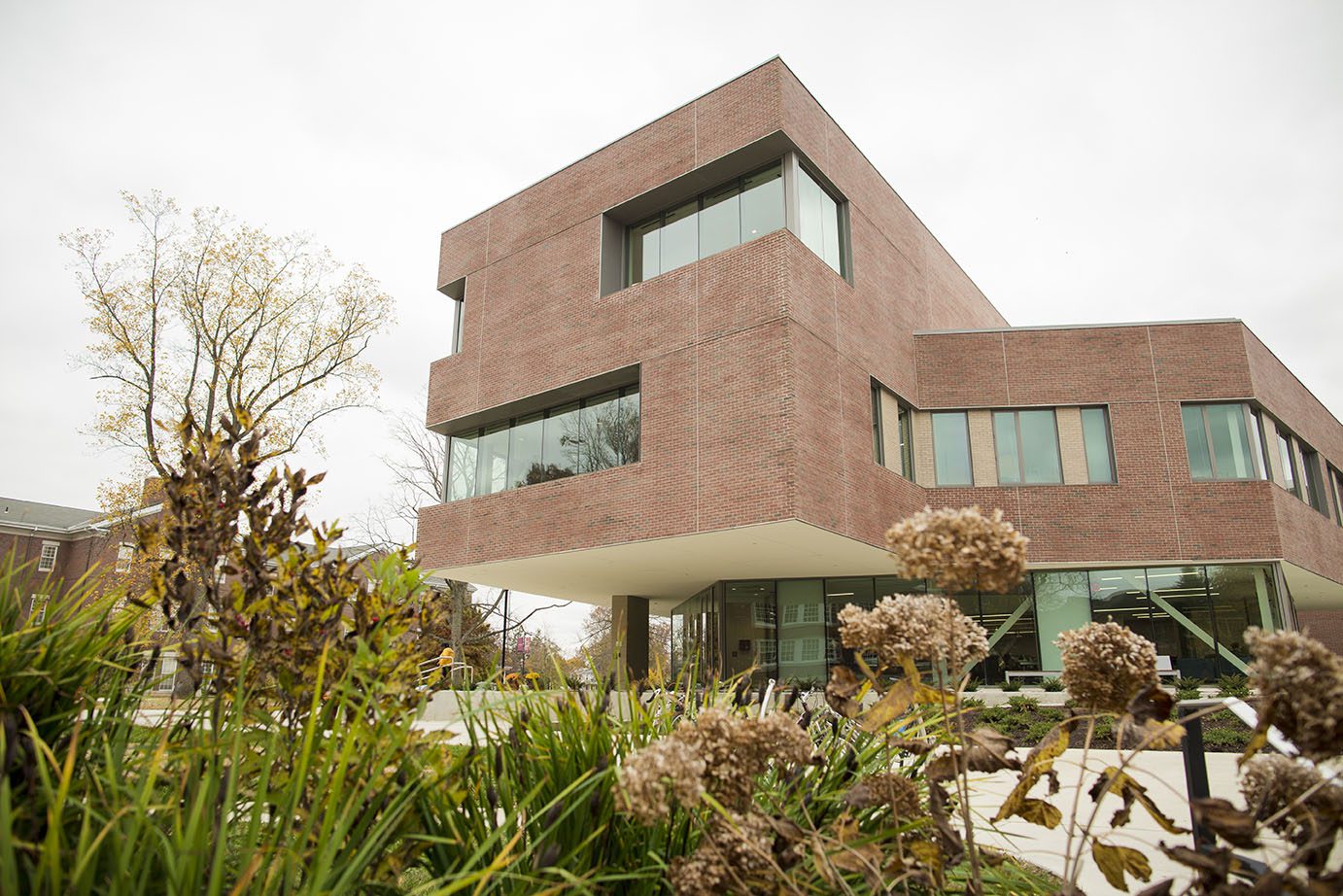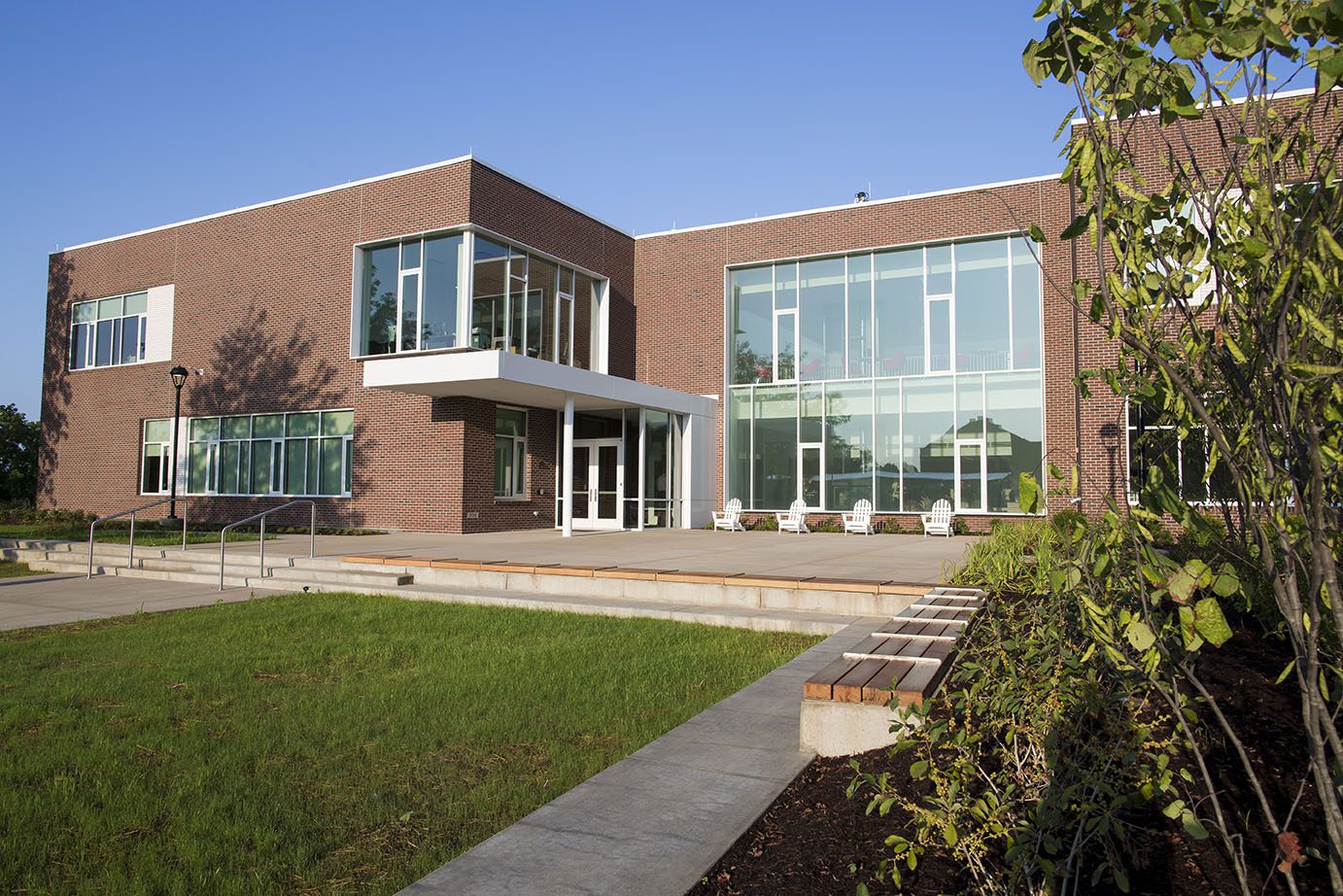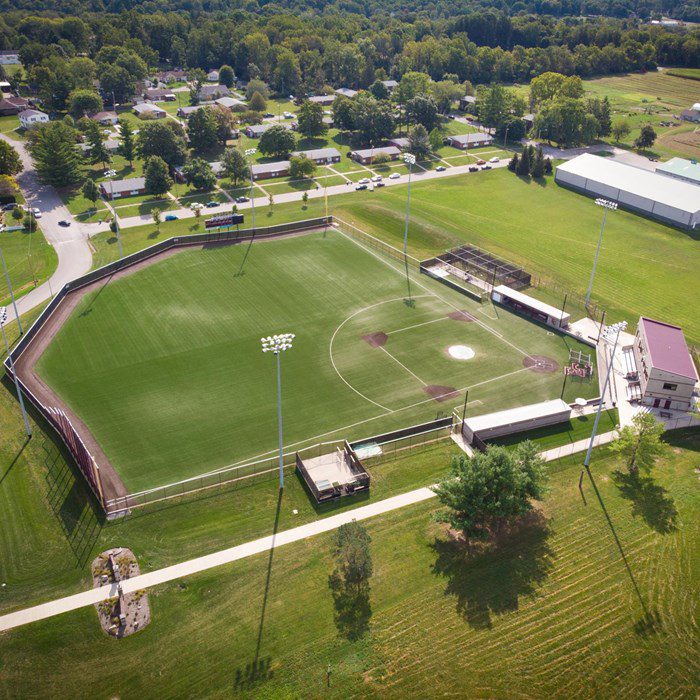Campus and history
On our 535-acre campus, you’ll discover woods, streams, ponds, old fields and prairie used for scientific research and recreation. Additional natural areas are set aside for scientific research, including an old growth forest and a rock preserve.
Earlham’s campus includes Earlham College and the Earlham School of Religion. Approximately 1,000 undergraduate students call this tree-shaded campus their home. The majority of Earlham students live on campus in our residence halls, theme and friendship houses and campus apartments. In addition to our extensive green spaces and student residences, we have state-of-the-art academic and athletic facilities, including the following:
Our history
Earlham has its roots in the Great Migration of Quakers from the eastern United States, especially from North Carolina, in the first half of the nineteenth century. A peculiarly Quaker combination of idealism and practicality drew them to the Northwest Territory. As Friends, those who came out of the South had found themselves increasingly uneasy living in a slave society. As small farmers, the abundance of cheap, fertile land made Ohio and Indiana magnets of migration.
This migration created Indiana Yearly Meeting of Friends in 1821. By 1850, it was the largest in the world. Its center was Richmond, where the yearly meetinghouse for the Orthodox body was located. Thus when Indiana Friends decided in 1832 to open a boarding school “for the guarded religious education of the children of Friends,” they placed it in Richmond. After fifteen years of laborious fund-raising, it opened on June 6, 1847. In 1859, a collegiate department was added and the school became Earlham College, in honor of the home of the eminent English Quaker minister Joseph John Gurney, who had been an early supporter. Earlham was the second Quaker college in the world, and the first coeducational one.
Most Quakers changed in the late nineteenth century, and Earlham changed with them. Originally a “select” school, open only to Friends, by 1865 the school accepted non-Quaker students, and hired its first non-Quaker professor in 1886. Gradually Quaker plain dress and the plain language disappeared from campus. By 1890, art and music, originally forbidden by Quaker beliefs, had become part of the curriculum. In the 1890s, intercollegiate athletics became part of Earlham life.
Change did not come without controversy. Between 1895 and 1915, Professor of Bible Elbert Russell was the target of numerous protests for introducing modernist methods of Bible study to the college. In 1920-1921, the college was actually the target of a heresy investigation aimed at liberalism and evolution. In the 1930s and 1941, many Quakers fiercely protested the relaxation of rules banning dancing and smoking. During World War II, the enrollment of Japanese-American students outraged some local residents.
Earlham transformed itself after World War II, with building and financial growth and the advent of a new generation of faculty, many of whom were veterans of Civilian Public Service. The student body became national and international. In 1960, to meet a growing demand for leadership in the Society of Friends, the Earlham School of Religion opened as the only accredited Quaker theological seminary in the world. A few years later Earlham created Conner Prairie, the living history museum near Indianapolis that became independent in 2006. In 2010, by mutual consent, the College and Indiana Yearly Meeting altered their legal relationship, ending the yearly meeting’s appointment of trustees and replacing it with a covenant of mutual expectations. Although Quakers are now a minority of students and faculty, the College maintains its Quaker identity through its Principles and Practices document, its governance by consensus-seeking, its curriculum and its affiliation with Western Yearly Meeting of Friends.
by Thomas Hamm, professor of history and former college archivist


